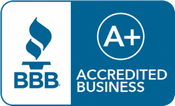
100% Gain Exclusion For Small Business Stock
Published on June 21, 2016
Among the many “tax extenders” in the Protecting Americans from Tax Hikes Act of 2015 (PATH Act) passed late last year, is a permanent exclusion for gains on qualified small-business stock (QSBS). This 100 percent exclusion from gross income for certain gains from the disposition of QSBS -- held for more than five years -- may change the way some small businesses are funded.
What is QSBS?
Section 1202 of the Internal Revenue Code qualifies QSBS by the following:
- The stock must be in a domestic C corporation -- now and for a substantial time the stock is held.
- The stock must be acquired at its original issue (not from a secondary market).
- For a substantial time the stock is held, at least 80% of the value of the corporation’s assets must be used in the “active conduct” of one or more qualified businesses. Active conduct means a qualified business can’t be an investment vehicle or inactive business. It also cannot be a service organization, such as an accounting firm, or a law firm relying on members’ expertise to provide to clients. Other businesses that are not “qualified trades or businesses” are banking, insurance, financing, leasing, investing, or similar businesses; any farming business; any business involving the production or extraction of products for which percentage depletion can be claimed; or any business of operating a hotel, motel, restaurant, or similar business.
- The corporation may not have more than $50 million in assets as of the date the stock was issued and immediately after.
What are the tax benefits of QSBS?
If you’ve held QSBS for at least five years, a portion of your gain—or in some cases all of your gain—can be excluded from federal tax when you sell it. The remaining capital gain is then taxed at a 28% rate (assuming you are in the 15% or 20% bracket for regular long-term capital gains). The maximum gain eligible for exclusion on any one investment is the greater of $10 million or 10 times the taxpayer’s adjusted basis in the stock (which is normally not greater).
There are several possible treatments for gain exclusion depending on when you purchased your private company stock. The table below illustrates.
| ACQUISITION PERIOD | FEDERAL EXCLUSION |
| BEFORE FEBRUARY 18, 2009 | 50% |
| FEBRUARY 18, 2009–SEPTEMBER 27, 2010 | 75% |
| SEPTEMBER 28, 2010 AND LATER | 100% |
Note also that the gain excluded from capital gains tax is not subject to the 3.8% net investment income tax (NIIT).
Why this matters to small business:
The exclusion has existed in a variety of forms since 1993, but it’s only since 2010, when the exclusion rate was increased to 100%, that it came to the forefront of startup planning. Still, it has not been widely used as a vehicle to fund startup businesses because it’s been so uncertain (it was one of those tax extenders that routinely expired and was periodically re-enacted). PATH changed all that by making the Section 1202 exclusion permanent. Now, founders and investors can plan their investment activities in small business with certainty. The permanent extension encourages holding, not speculating. Anyone investing in or starting new qualified small businesses has reason to celebrate.
How to qualify QSBS:
It can be difficult to claim your QSBS benefit, so take the following precautionary steps (because it’s nearly impossible to accomplish them at a later date).
- Keep good records.
Document each purchase of stock in your private portfolio, noting the following:
- the date purchased
- the amount paid
- a copy of the canceled check or wire with your account statement showing the funds leaving your account
- a copy of the share certificate
- Certify your stocks.
If you even think your investment may eventually qualify for QSBS treatment, ask the selling company to certify:
- that it is a domestic C corporation.
- that it has $50 million or less in assets immediately after your purchase.
- that at least 80% of the company assets are used in the active conduct of a qualifying business.
- Watch the calendar.
Keep track of the date when your investment reaches the five-year holding period so that you don’t sell it prematurely and lose the tax advantage.
- Call your accountant.
Work with an accountant who understands the rules of QSBS well. The rules may seem fairly straightforward, but there are a few twists and loopholes that could cost you money. Further, QSBS has other tax benefits that a good accountant will find. This article only looked at one section -- Section 1202 -- but there are others. A savvy accountant will help you learn how to use QSBS to your portfolio’s advantage.
The extension of the exclusion for gains on qualified small-business stock is a win for small business. Do not miss out on this historic and lucrative tax break.






